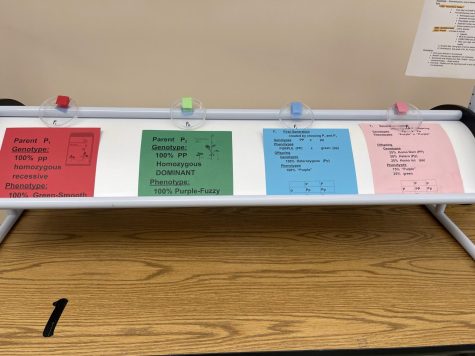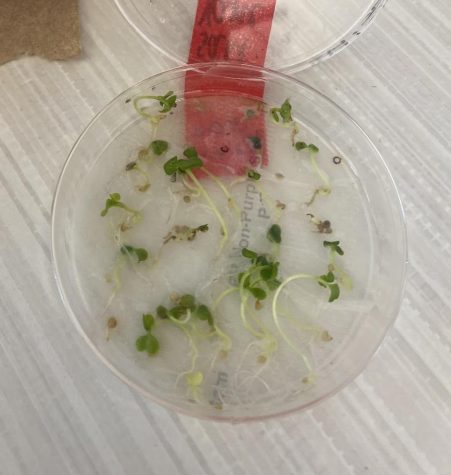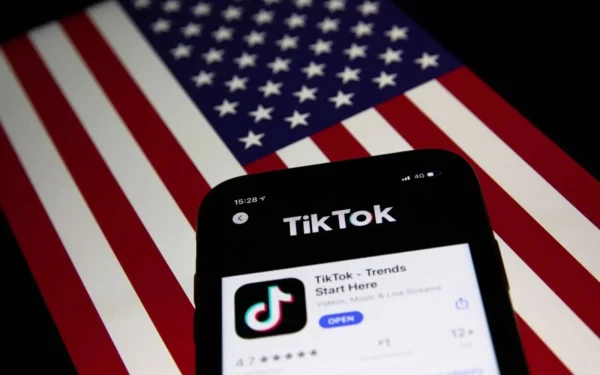Mustard and Genetics?
Picture of sign above plants.
Everyone is different in their own way, but what makes us different? In STEM class, students grew mustard plants to see examples of how genetics work. To conduct the experiment, students used many materials including soil, seeds, Petri dishes, and water.

“In this project, we planted genetically modified mustard plants and watched them grow,” said eighth-grader Isabelle Downey. “We predicted the phenotypes (physical appearance) of the plants before they sprouted by looking at their genotypes (sets of genetic material) by using Punnett squares.”
On the first day, students in groups were given four mustard plant seeds, each a different color: green, purple, and two that were both colors. They put the different plant seeds in separate Petri dishes, added water to it, and closed the lid. Since the lids were on, the water could not evaporate and the plants had a constant supply of water because of condensation. Some of them died, but the remaining seeds hatched and grew bigger over time. The first 1-5 days the seeds barely grew in size. After eleven days the 8th graders had to leave for Washington D.C. and over their four-day trip, many of the plants had time to grow, showing which color they were. They had grown so much larger during this time that they were moved to larger cans made of cut in half tennis ball bottles filled with dirt. But bad luck then struck the plants.
“The students and experiment were going perfectly until we lost power during the hurricane. The GMO plants require 24 hours of light,” said MS Science Department Chair/Math Teacher Mr. Oster. The plants lost the light they needed to grow, causing many of them to die.

After the plants grew, the plants’ stem colors helped students see physical attributes that showed the plants’ different genetics so they could get a better understanding of the outcome. Students used Punnett squares to find the percentage of certain genotypes happening. Students then advanced from using 2 by 2 Punnett squares to 4 by 4 Punnett squares. The learning experience was made even more interesting than just plants when students used Punnett squares to determine what different cartoon characters’ children would look like. This project was successful in teaching students. “The information we learned can help me improve my understanding of things in the future of this class,” said eighth grader AJ Serro.
“From this project, I learned how to make and use Punnett squares,” said Downey. They learned vocabulary like homozygous, heterozygous, monohybrid, recessive and dominant. With this hands-on lab, students were able to learn many things about genetics in a shorter period of time.





